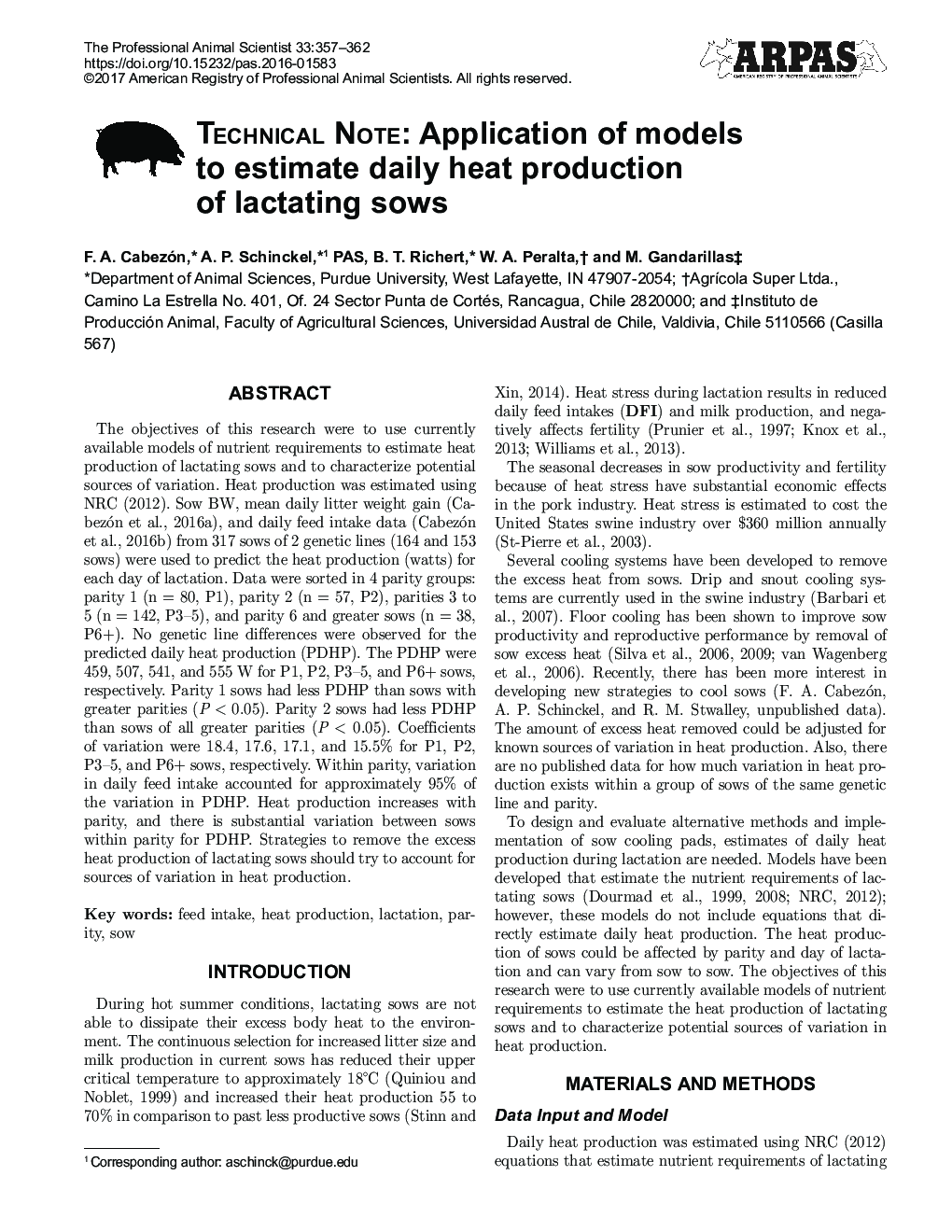| Article ID | Journal | Published Year | Pages | File Type |
|---|---|---|---|---|
| 8503756 | The Professional Animal Scientist | 2017 | 6 Pages |
Abstract
The objectives of this research were to use currently available models of nutrient requirements to estimate heat production of lactating sows and to characterize potential sources of variation. Heat production was estimated using NRC (2012). Sow BW, mean daily litter weight gain (Cabezón et al., 2016a), and daily feed intake data (Cabezón et al., 2016b) from 317 sows of 2 genetic lines (164 and 153 sows) were used to predict the heat production (watts) for each day of lactation. Data were sorted in 4 parity groups: parity 1 (n = 80, P1), parity 2 (n = 57, P2), parities 3 to 5 (n = 142, P3-5), and parity 6 and greater sows (n = 38, P6+). No genetic line differences were observed for the predicted daily heat production (PDHP). The PDHP were 459, 507, 541, and 555Â W for P1, P2, P3-5, and P6+ sows, respectively. Parity 1 sows had less PDHP than sows with greater parities (P < 0.05). Parity 2 sows had less PDHP than sows of all greater parities (P < 0.05). Coefficients of variation were 18.4, 17.6, 17.1, and 15.5% for P1, P2, P3-5, and P6+ sows, respectively. Within parity, variation in daily feed intake accounted for approximately 95% of the variation in PDHP. Heat production increases with parity, and there is substantial variation between sows within parity for PDHP. Strategies to remove the excess heat production of lactating sows should try to account for sources of variation in heat production.
Related Topics
Life Sciences
Agricultural and Biological Sciences
Animal Science and Zoology
Authors
F.A. Cabezón, A.P. PAS, B.T. Richert, W.A. Peralta, M. Gandarillas,
